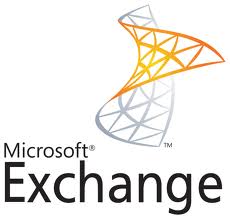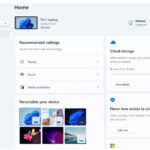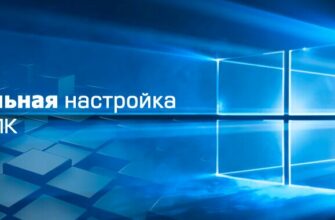
Автор (режиссер): CBT Nuggets
Жанр: Обучающие видео-уроки
Продолжительность: 25:08:41
Год:2012
Стоимость: 1999 рублей
Доп. материалы: Есть
Описание:
This video training with Greg Shields covers Microsoft’s popular exchange server, including topics such as mailbox server roles, exchange backup and data recovery, and more.
Recommended skills:
- Experience installing, administrating, and managing Exchange Server 2010
Recommended equipment:
- Microsoft Exchange Server 2010
Related certifications:
- Microsoft Certified Technology Specialist (MCTS): Microsoft Exchange Server 2010, Configuration
- Microsoft Certified IT Professional (MCITP): Enterprise Messaging Administrator 2010
Related job functions:
- IT professionals
This course is the definitive training package for Exchange 2010 and the 70-662 examination.
You'll learn the exact steps you need to successfully implement or upgrade your Exchange infrastructure. Plus, you'll dig deep into the new features of Exchange 2010 that you'll want to implement immediately, such as Database Availability Groups, Federated Sharing, and Messaging Records Management.
[wpspoiler name="Подробное описание" ]
1. Introduction to Microsoft Exchange and Exchange Certification (00:13:41)
Are you ready for Exchange 2010? If you’re not, then this course is perfect for you. Even if you are, brushing up on the configuration tips and tactics you’ll be using during deployment and on a daily basis is an excellent learning experience for your job role. Not to mention that Microsoft’s MCITP certification course starts by passing that all-important 70-662 TS: Microsoft Exchange Server 2010, Configuring exam. It all starts in this first Nugget, where we introduce the course, talk a bit about the fully-featured Exchange organization we’ll be building and working with throughout this course, and get things started for 20 Nuggets of Exchange learning.
2. Understanding Exchange Roles and Components (00:14:26)
Truly understanding Exchange means also understanding its roles and components. Were you aware that Exchange 2010 is now equipped with five different roles for a member server? Those roles are Mailbox Server, Client Access Server, Hub Transport Server, Edge Transport Server, and Unified Messaging Server. In this Nugget, you’ll learn about the role of each role, along with the specific reasons why Microsoft has broken each out. With them, you’ll find that Exchange can scale from 10 users to 10,000 or more at exactly the point you need it.
3. Preparing your Infrastructure and Installing your First Exchange Server (00:34:27)
What most administrators don’t know is that Exchange 2010 isn’t necessarily a Next, Next, Finish installation. There are a number of prerequisites and other software that must get on your candidate server prior to installation. That server must also have the right hardware configuration. You’ll learn about all those needs as well as the steps necessary for installation in this Nugget.
4. Mailbox Server Role: Databases, Mailboxes, and Public Folders (00:31:05)
You know that an Exchange organization has mailboxes, and that those mailboxes are stored in mailbox databases. But do you know how to work with those databases, creating, configuring, and enabling them properly for use by users? Creation and configuration of mailbox databases and public folders are the topic for this important first-start with the Mailbox Server role.
5. Mailbox Server Role: Addresses, Folders, Groups, Contacts, and Resource Mailboxes (00:30:54)
And yet mailboxes aren’t the only things that require management on your Mailbox Servers. Your Exchange organization requires a host of recipient objects that include address lists, offline address books, mail contacts, distribution groups, and resource mailboxes for things like conference rooms and checked-out equipment. Exchange 2010 also now includes managed folder with their managed folder policies through its inclusion of Messaging Records Management. Learn about all those necessary items in this Nugget.
6. Client Access Server Role: Outlook, OWA, and the Exchange Control Panel (00:25:18)
Mailboxes are great, but only if your users can get to them. Ensuring that connection of user to their mailbox is the job of the Client Access Server role. Separating out the CAS in an Exchange organization dramatically improves your administration of mailboxes, by providing a separate location for directing users to mailboxes. In this Nugget, you’ll learn how that process works for both Outlook as well as Outlook Web App. You’ll also discover some of the exciting features in OWA such as direct file access, WebReady Document Viewing, and remote file servers, all of which improve the user’s experience in interacting with their mail.
7. Client Access Server Role: POP & IMAP, ActiveSync, and Outlook Anywhere (00:23:50)
Today’s email is becoming ever more pervasive. We can access it from almost anywhere. That’s the topic in this second Nugget on the Client Access Server role. In it, you’ll learn about the role of POP and IMAP access, as well as how to properly configure it when you need it. You’ll also learn the tactics for configuring ActiveSync for mobile devices, including ActiveSync mailbox policies and offline address book distribution. You’ll also learn how to enable and use Outlook Anywhere, a service that leans on Microsoft’s RPC over HTTP proxy for getting Internet-based Outlook clients routed to their mail.
8. Hub Transport Role: Message Transport, Connectors, Accepted Domains, and Remote Domains (00:29:40)
You’re not the only organization out there. Nor are you the only business. Sometimes your business needs to interact with other businesses, and that usually happens through the Internet. Another job of the Hub Transport Server is in routing mail to the right place. That can use send connectors and receive connectors for smart hosts at your perimeter or your provider. It can also use Edge Subscriptions to Edge Transport servers. It can also mean interacting more deeply with other namespaces through accepted domains.
9. Hub Transport Role: Email Address Policies, Transport Rules, and Journal Rules (00:13:52)
In Exchange 2010 every single piece of mail that changes hands must go through a Hub Transport Server, even when that piece of mail needs to route from two mailboxes in the same database. Another role of the Hub Transport server is in being that single (yet distributed) point of access for mail transfer. It enjoys this position because from that location it can apply transport rules, journal rules, email address policies, and many other forms of email policies to ensure that your mail remains safe and compliant. You’ll learn about those rules and policies in this second look at the Hub Transport Server.
10. Edge Transport Role: Installing and Configuring (00:25:44)
Mail inside your organization bounces around from Hub Transport Server to Hub Transport Server, but sometimes that mail needs to route to the Internet. You can accomplish that task through another smart host or a mail provider, or you can route it yourself through an Edge Transport Server. Edge Transport Servers uniquely sit in your DMZ, outside your Windows Domain. They leverage a copy of only the most-necessary parts of your Active Directory through a local Active Directory Lightweight Directory Services partition. Getting all that working correctly is the topic for this important Nugget.
11. Edge Transport Role: Message Filtering and Anti-Spam (00:28:37)
That same Edge Transport Server is also your buffer with the outside world. On it are a set of message filtering and anti-spam technologies that ensure only the right mail gets passed into your organization. At the same time, its services also ensure that you don’t become a bad Internet citizen, relaying mail inappropriately to others. You’ll learn all about Exchange’s technologies to accomplish this in this Nugget: IP Allow Lists, IP Block Lists, IP Allow and Block List Providers, Sender ID, Sender and Recipient Filtering, Sender Reputation, and Attachment filtering.
12. Understanding and Implementing Federated Sharing (00:12:49)
You have an Exchange organization, as does your partner company elsewhere on the Internet. You want to share some forms of Exchange data with that company. How do you do it? With Exchange 2010, you implement Exchange Federated Sharing in cooperation with the Microsoft Federation Gateway. With the right X.509 certificates, a federation trust, some DNS TXT records for your AppID, and an organization relationship or sharing policy, you can determine exactly what kinds of data you want o share and among which people.
13. Role-Based Access Control in Exchange Administration (00:28:12)
Access control in Exchange 2010 isn’t your usual ACL-based system. Exchange 2010 uses a somewhat complicated role-based architecture for handing out privileges to users that’s very different than what you’re used to. In it, you’ll need to integrate the individual actions you want people to do with the right groups of actions, groups of users, and a special “glue” that holds them all together. The result, while fantastically scalable for the largest of organizations can be a little daunting at first. To understand it best, you must watch this Nugget. In it you’ll learn the five parts of Exchange’s RBAC model, how Exchange actions link one-to-one to Exchange PowerShell cmdlets, and the proper ways to build them (using both PowerShell and the Exchange Control Panel) so that administrators get the right privileges.
14. Exchange Backup and Data Recovery (00:23:30)
Exchange 2010 comes with some marked improvements to mailbox recoverability. No more storage groups, recovery databases, the decoupling of databases from specific servers, all of these aggregate to make Exchange 2010 the best solution for mail backup and restore yet. But you need to know the right tips and tactics to ensure you’re actually backing up, and that you actually can recover – from the individual item, to specific mailboxes, to entire databases. This Nugget discusses those steps, including special tricks like dial tone recovery and recovering from database corruption, ISINTEG and ESEUTIL, and the right order of steps to ensure you get back to operations quickly.
15. Exchange High Availability: Database Availability Groups (00:28:56)
One of those brand new tactics is Exchange 2010’s impressive new Database Availability Groups. DAGs are a combination of the previous Exchange versions’ Single Copy Cluster (SCC), Cluster Continuous Replication (CCR), Local Continuous Replication (LCR), Standby Continuous Replication (SCR) and more. This Nugget discuss how to configure DAGs, including assigning a file share witness (along with how to “cheat” by using a file server rather than another Exchange server), replication latency, configuring lag and failover priority for data protection, suspending and reseeding, and why and how to create special DAG networks.
16. Exchange High Availability: Public Folders and Non-Mailbox Servers (00:14:39)
And yet preserving the data that is your mail isn’t the only important step in Exchange high availability. Also necessary to protect are your Public Folders and your other roles that don’t host mailboxes. This Nugget discusses the creation of Client Access Server arrays using Windows Network Load Balancing and third-party solutions. It discusses why the Hub Transport role is automatically a highly-available role once you expand to more than one site, and how to configure load balancing and/or DNS MX records for Edge Transport Servers. You’ll also learn about Public Folder replicas, replica scheduling, and how to set Public Folder referrals to keep your important data operational.
17. Exchange Monitoring and Reporting (00:20:27)
Exchange monitoring and reporting is a full 13% of the 70-662 exam content. This means you absolutely need to know it if you’re to be successful for the test. You also need to know it if you’re to recognize when performance or mail flow problems are causing problems in your organization. This Nugget explores not only the monitors that are available, but also Exchange’s built-in analyzers and troubleshooters. You’ll also explore the multitude of logs that can be enabled to trace down root causes to common problems.
18. Exchange from the Outside World: Security, Certificates, Name Resolution, and Autodiscovery (00:22:56)
Attaching clients to your Exchange organization from the outside world isn’t a trivial task. You need the right firewall ports. You need attack surface reduction with the Security Configuration Wizard. You need certificates, and potentially more than one. You need name resolution. You also need autodiscovery to make the process easier, along with all the complex configurations that come with the autodiscovery service. Learn about all of these in this Nugget’s end-to-end look at Exchange from the Outside World.
19. Migrating from Previous Exchange Versions to Exchange 2010 (00:12:44)
While there’s plenty of content on the Internet that’ll help you create a new Exchange organization, most of us won’t be creating brand new ones in our lifetime outside a lab. For most of us, knowing how to migrate from previous versions of Exchange is a major project in our career’s future. Learn the exact steps to do that in this all-important capstone module. In it, you’ll learn the precise series of steps that are necessary to upgrade Exchange 2003 and Exchange 2007 to Exchange 2010. This Nugget is not one to miss.
20. Managing Exchange 2010 with Windows PowerShell (00:15:01)
Finally, conclude your learning with a look at Windows PowerShell for Exchange administration. Throughout this course you’ve already learned a set of PowerShell cmdlets for accomplishing needed actions. This final Nugget sums them up, giving you your short list of those that you’ll use the most. You’ll also learn about PowerShell’s implicit remoting for Exchange, a technique that enables you to use Exchange’s cmdlets from any PowerShell enabled computer (and one that’s just ridiculously cool). You’ll explore some of the scripts that are part of every Exchange installation, and learn how to use Exchange’s PowerShell command log to tell you exactly which PowerShell commands are invoked every time you click something in the Exchange Management Console.
[/wpspoiler]



